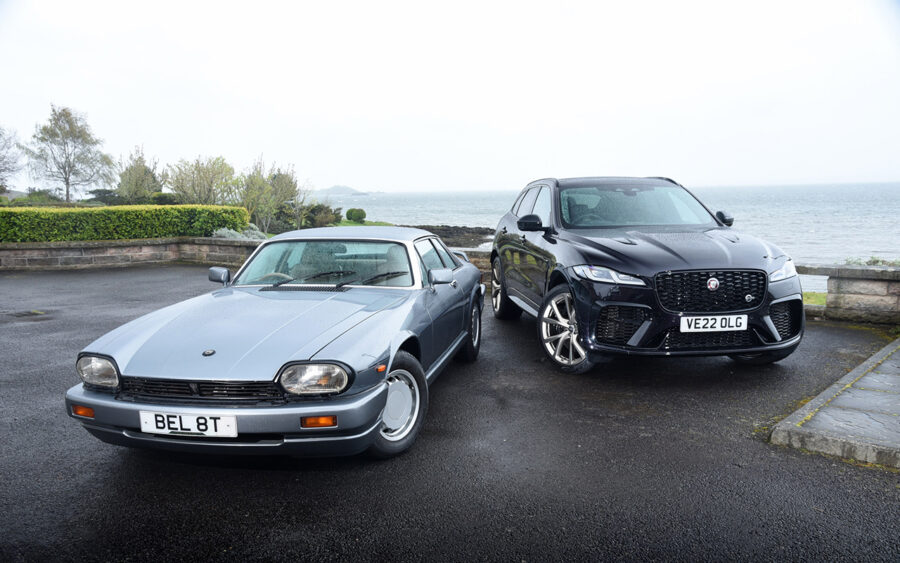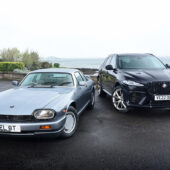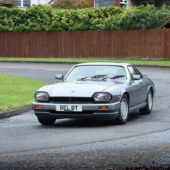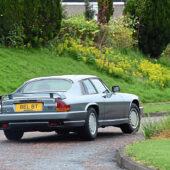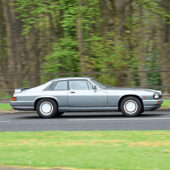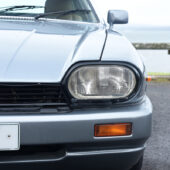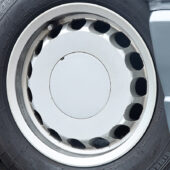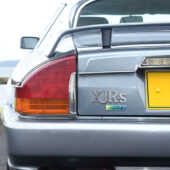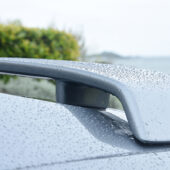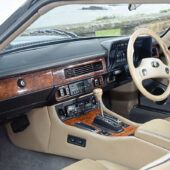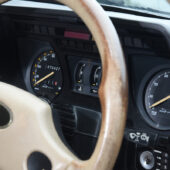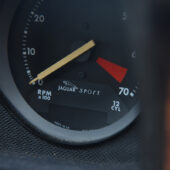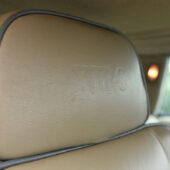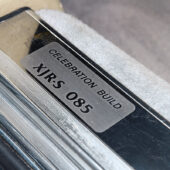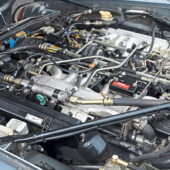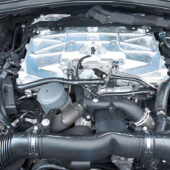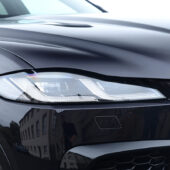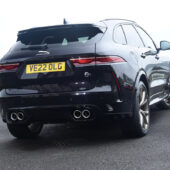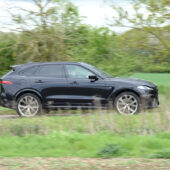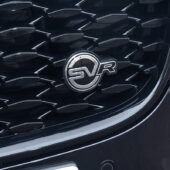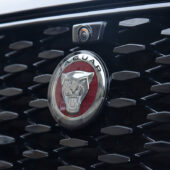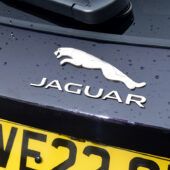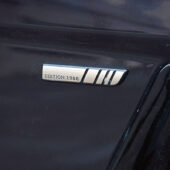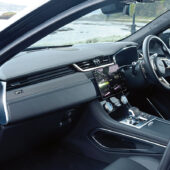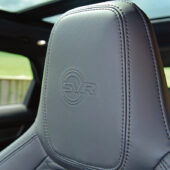After winning the 24 Hours of Le Mans in 1988, Jaguar celebrated with a limited edition XJ-S. Over three decades later, it’s still celebrating the same victory with a special edition F-Pace
Words and images: Paul Walton
From the E-Type’s 1961 Geneva launch to being taken over by Ford 27 years later, there have been plenty of key moments in Jaguar’s long history. But few have had a car named after them and fewer still have had two. But Jaguar’s victory of the 1988 24 Hours of Le Mans is so important it’s resulted in a pair of limited editions that in terms of image and updates are strikingly similar.
Yet while the first, the XJR-S Le Mans Celebration, marked the start of Jaguar’s faster breed of cars, the second, the F-Pace SVR Edition 1988, is potentially the end. To explain the significance of the race and the two models it inspired, we’ve gathered an example of these two rare yet important Jaguars together.
Ever since the former Unipart and Massey Ferguson director, Sir John Egan, had taken over as Jaguar’s chairman in 1980, he’d wanted to take the company back to the famous 24 Hours of Le Mans. He understood a potential sixth victory of a race it had once ruled over 25 years earlier offered significant marketing opportunities for its road cars.
“I was extremely impressed by the way other manufacturers, especially BMW, exploited their racing programmes with value-added ‘racing inspired’ extensions to the current range,” he wrote in his 2015 biography, Saving Jaguar.
Despite still trying to modernise and streamline the company after several years in the financial wilderness, Egan gave the company’s support to two independent racing programmes he hoped would lead Jaguar back to Le Mans. One was a sports racing car for the American IMSA championship developed by Bob Tullius’ Group 44 team which had previously competed with an E-Type Series 3 that was followed by an XJ-S. After debuting towards the end of the 1982 season, the team’s V12-engined XJR-5 became successful, winning four races the following year.
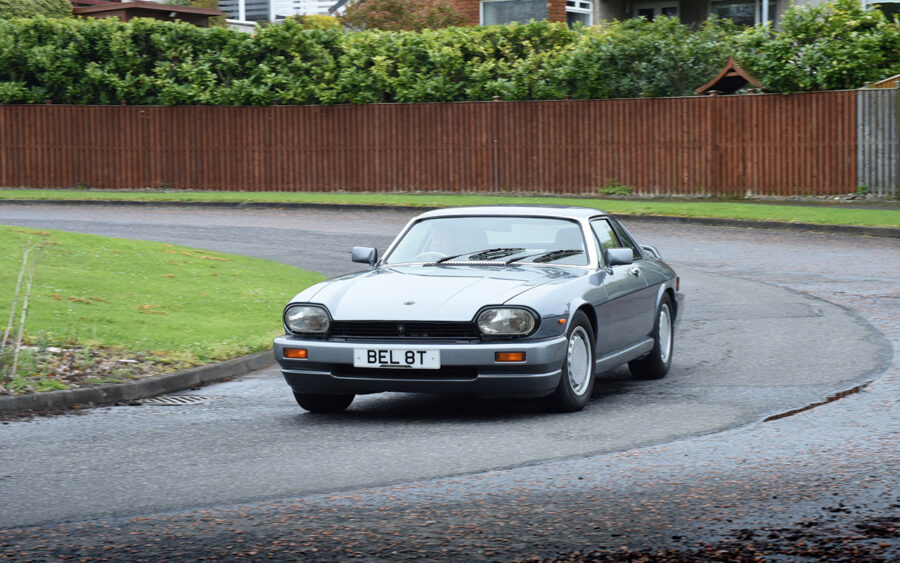
In 1984 Jaguar reckoned the XJR-5 could be competitive at Le Mans and transported two examples to France, the first time the brand had entered the race since 1964. Although both retired, they had run consistently in the top ten, encouraging Group 44 to return the following year when one finished in 13th position.
The second was Tom Walkinshaw’s TWR outfit which had spotted that the XJ-S offered a better power-to-weight ratio than the BMW 528 or 635 and wanted to enter the V12-engined car into the 1982 European Touring Car Championship.
“If Jaguar could give sufficient financial support, his TWR organisation could develop the car into a winner,” continued Egan. He was quickly proven right. In 1984 TWR took the manufacturer’s title for Jaguar while Walkinshaw himself won the driver’s championship.
“One of the reasons we were so dominant was that TWR and Jaguar engineering were working well together,” explained Egan in his book. “Their shared engine development programme had created the V12 powering the winning cars. They had also produced a four-valve head for the V12 engine, which now produced 650bhp and this had clear potential for use in a Le Mans car.”
It was this connection which allowed Egan to decide that Group 44 wasn’t the outfit to give the company its sixth Le Mans victory. And so he handed Jaguar’s entry into the World Sportscar Championship to TWR while Tullius was to continue in IMSA. This arrangement lasted until 1988 when Walkinshaw was given the contract to look after both series.

After debuting half-way through the 1985 WSCC season, it didn’t take long for the TWR-led Jaguar team to become a serious contender, winning its first race, the 1000km of Silverstone, a year later before taking both the drivers’ and manufacturers’ championships in 1987. But the prize that Egan, Walkinshaw and everyone at Jaguar wanted the most – the 24 Hours of Le Mans – had so far eluded them.
All came good in 1988 when despite the grid being filled with several Porsche 962Cs that had won the previous two events, the XJR-9 of Jan Lammers, Johnny Dumfries and Andy Wallace quickly took the lead and stayed there. But following a largely trouble-free race, a failing gearbox on the final few laps threatened to end Jaguar’s dream. As a last resort, Walkinshaw ordered the other two XJR-9s that were in fourth and 16th position to drive in formation behind the leader and push it over the line if necessary. Thankfully the transmission held and such drastic action wasn’t required, enabling Jaguar to take the Le Mans chequered flag for the first time in 31 years.
“I felt very proud at the presentation ceremony when the national anthem was played and literally thousands of British spectators joined in so enthusiastically,” remembered Egan in Saving Jaguar.
In August 1988 Jaguar announced a special model of the XJ-S V12 that honoured the victory and built by a new operation, JaguarSport, owned 50/50 by Jaguar and TWR. The company had actually been founded in May the same year, always with view to produce the ‘racing inspired’ versions of Jaguar’s current range Egan had wanted ever since he supported Walkinshaw’s ETCC effort in 1982.
“The formation of JaguarSport is a logical development of the highly successful motorsport relationship Jaguar has established with TWR over the past few years,” said Egan at the time. “It will enable us to apply the experience we have gained on the racing circuits of the world to develop Jaguars aimed at the more specialised requirements of the enthusiast.”
In reality, the car simply featured many of the aftermarket accessories TWR had been independently marketing for Jaguar’s range since 1984 under its own Jaguar Sport brand. For the XJ-S, these included a GRP body-coloured bodykit designed by Peter Stevens (later responsible for the TWR-produced Jaguar XJR-15) which reduced drag and lift by around ten per cent. There were also handsome 15in alloys by Speedline plus stiffer springs, Bilstein shock absorbers, a thicker anti-roll bar, harder bushes and a few slight adjustments to the suspension geometry.
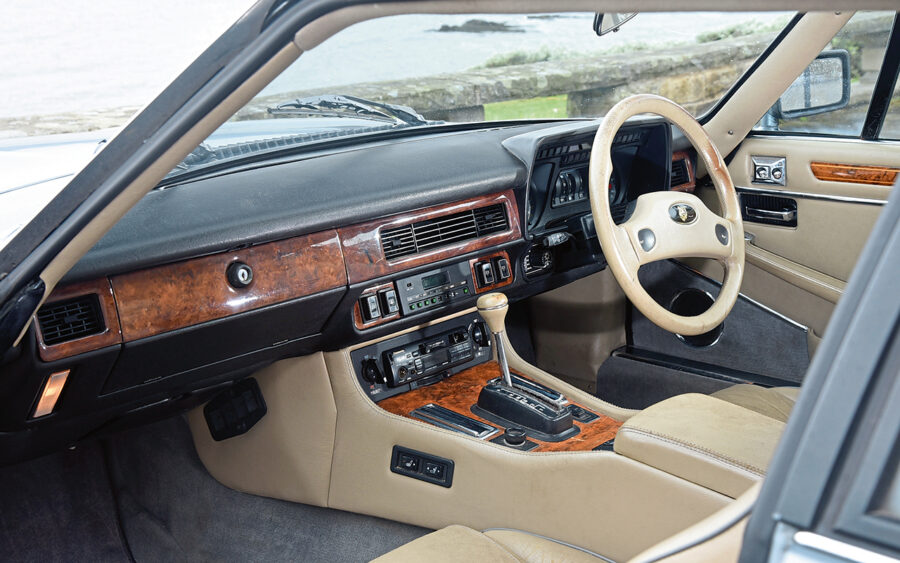
At the time there was no standard model and customers could pick and choose which additions they wanted but the official JaguarSport version came with the majority of these already fitted.
The first 100 examples were a numbered limited-edition model called the XJR-S Le Mans Celebration, all painted in the same shade of Tungsten metallic grey with doeskin leather interior. They also had a double coachline along their flanks that finished with an outline of the winning Jaguar XJR-9 on both rear wings. Chrome sill plates featured the car’s build number at one end plus two laurels marking Jaguar’s victory of both the 1987 World Sports Car Championship and the 1988 24 Hours of Le Mans at the other.
Although the changes were modest and the V12 was left alone, the differences to how the car drove were still noticeable. As Fast Lane magazine said at the time, “Even with a standard engine, the XJR-S felt a lot quicker simply because it gave more traction and was less turbulent on uneven roads.”
At £38,500, the XJR-S Le Mans Celebration was £3000 more expensive than a standard XJ-S V12, yet the 100 examples apparently sold out within four days of its announcement. The XJR-S then became a production model available in four colours (Signal Red, Solent Blue, Alpine Green and Arctic Blue) with magnolia upholstery.
Part-completed cars were transported 60 miles from Jaguar’s Browns Lane factory to TWR’s Kidlington facility near Oxford to be transformed into Rs. Together with its XJR 3.6 saloon sibling from 1988, the car could initially only be ordered from 20 authorised Jaguar dealers but this later grew to the entire sales network. The XJR-S was never available with the straight six engine nor as a convertible in the UK although 50 examples (together with 50 coupes) were later exported to America.

When TWR was producing the cars under its own name, a 6-litre version of Jaguar’s V12 had been an expensive, £7000 option. In 1989 and after a little over 300 XJR-Ss had been produced, this larger unit became the XJR-S’s standard engine, increasing the 5.3-litre’s 295bhp to 318bhp.
When the XJ-S was facelifted in 1991, the R-S followed suit but after Jaguar cut ties with TWR, the new bodykit was designed by Jaguar’s own studio and the cars fully produced at Browns Lane. In 1993 when Jaguar increased the capacity of the standard V12 to 6.0 litres, thus rendering the XJR-S obsolete, it was dropped from the company’s range.
Although always a niche model with less than 1200 XJR-Ss produced between 1988 and 1993, as the original R model, its place in Jaguar’s history is assured. From the X300 XJR in 1994 that was first model to receive a supercharger to the entire V8 era, most cars in that time have had an R variant. With Jaguar pulling out of sports car racing at the end of 1991, the year after it won Le Mans for the seventh and so far final time, these later models were less ‘racing inspired’ like Egan had originally envisaged but became a byword for the company’s high performance models in the same way that M is for BMW.
Similar to those first TWR examples, the recent R cars have been developed by Jaguar’s Special Vehicle Operations, a separate outfit based in Ryton a few miles outside of Coventry, and now called SVR to reflect this. They include the 575PS (567bhp) F-Type from 2018 plus an F-Pace model with 550PS (542bhp) that arrived a year later.
In June 2022 and coming as a complete surprise to everyone, Jaguar revealed a special edition version of the latter. Called the 1988 Edition to mark the coming 35th anniversary of Jaguar’s sixth Le Mans win, it terms of what made the car different, it was similar to the original XJR-S. Only available in one colour, Midnight Amethyst, the 22in ten-spoke alloy wheels were now in Champagne Gold plus there was a tiny badge in the same colour only this time on the front wing. Together, the two colours give a hint of those of the tobacco company that sponsored the Jaguar team from 1986 onwards. Just 394 will be made, the amount of laps the winning XJR-9 covered in 1988.

“The design of the F-Pace SVR Edition 1988 is inspired by legendary Jaguar endurance racing cars,” said Special Vehicle Operations’ creative director, Richard Woolley, at the time of the car’s reveal.
Yet despite the PR hyperbole, I think the reason for the car’s introduction is closure. With Jaguar set to become an electric-only brand by 2025 and all future cars to become more luxurious and upmarket, the days of its high performance, petrol-engined models like the SVR are over. And so the Edition 1988 closes the book on its successful R-brand in the same way it was opened, by marking the Le Mans 1988 victory.
This means not only do the two cars gathered here, the 89th XJR-S Le Mans Celebration and one of the 394 1988 Editions, represent that win twice but over three decades of Jaguar’s high performance cars. They also reveal how the automobile market has changed in that time.
Thirty years ago sports cars like the XJ-S were still big players, but today it’s SUVs that rule the market. And so the purple car dominates the blue one, standing over it like an XJ40 would the 1100mm high Le Mans winning XJR-9.
Of the two, I reckon the old one is prettier. The Champagne Gold coloured wheels and detailing of the F-Pace are a bit too ‘Liberace’ for my tastes while that Midnight Amethyst paint is too dark, appearing black unless in direct sunlight.
But then I’m a child of Eighties and remain a sucker for aftermarket bodykits and big spoilers. No doubt any millennials reading this will feel differently. I also love the outline of the XJR-9 on the rear wing, a direct connection between the road and racing cars. With this little transfer no longer produced, they’re often missing from those Le Mans Celebrations that have been resprayed but then number 89 is a special car.

After being registered on 1 November 1988, the car was bought used six years later by the father of current owner, Mike Westgarth. He initially drove the XJR-S fairly regularly, but in the early 2000s it was put into storage in Mike’s commercial garage where it’s remained ever since. But rather than being forgotten and ignored, Mike has kept the big blue Jaguar serviced and in tip-top condition meaning the still highly original car was still good to go on the day of our shoot.
Even the interior is original, down to the ancient Panasonic stereo which when I turn on crackles into life for first time in two decades, blaring out a local station. Other than a traditional leather-covered shift knob replacing the plastic T-handle the XJ-S is famed for plus a tiny JaguarSport logo in the rev counter, the interior is largely as per a normal XJ-S. It even has the standard albeit doeskin coloured two-spoke steering wheel rather than TWR’s own four-spoke version fitted to later XJR-Ss.
The F-Pace’s interior is also largely as per the standard model’s although it does feature some accents in the same Champagne colour as the exterior. Considering at £101,550 the Edition 1988 costs over 16 grand more than a standard SVR, that’s a lot to charge for some fake gold.
Unsurprisingly, with almost 250bhp separating the 5.3 V12 of the XJR-S and the F-Pace’s 5.0 supercharged V8, they drive as differently as the eras they come from. Despite its supposedly racing pedigree, the earlier car feels little different from the standard model, the acceleration still having the same relaxed and laid-back character. This is mainly due to the dim witted three-speed GM400 automatic gearbox that isn’t always in the right gear and needs a hard shove of my right foot for it to finally kick down. But when it does, it releases more of that magnificent engine’s power, finally offering the sort of acceleration you’d expect for a car that was inspired by a motor racing victory. Yet even then the V12 doesn’t lose the refinement the unit has always been famous for, its noise barely becoming louder than its usual whisper.
The XJ-S was never a sports car in the true sense of the word and due to its size and suspension set-up, would be left for dead on a circuit or twisting B-road by a first generation of Mazda MX-5. Yet I reckon this XJR-S would give the diminutive two-seater a genuine run for its money in the same conditions.

The suspension and steering modifications result in a much firmer, more driver focused car and with less body roll corners can be taken relatively quickly. In my mind, these early R-Ss, even those with the standard V12, remain the absolute zenith of the XJ-S’s 21-year career.
The same could be said for the F-Pace SVR. The F-Type version might have an extra 25PS (24.7bhp), but it with a 0-60mph time of under four seconds, the big car is still gut-wrenchingly fast. The always eager V8 needs little persuasion to propel the car forward with a force similar to what Dumfries, Lammers and Wallace would felt have as they drove to victory 35 years ago. Plus whenever I put my foot down, the cabin is filled with the engine’s charismatically loud yet always gravelly note.
Despite the SVR weighing 2133kg, with the front and rear springs stiffened by 30 and ten percent respectively for greater body control together with an electronic active differential and brake-based torque vectoring system to maximise cornering traction, the big car can tear through bends like a smart-suit hooligan. Plus with all-wheel-drive and those big gold wheels shod with sticky Pirelli P-Zeros, grip is excellent and even at the limit never feels like it wants to snap away and send me towards the nearest tree.
The eight-speed automatic box from ZF plays a big part in the car’s performance. The complete opposite to the XJR-S’s lethargic three-speed unit, it’s always fast to react to my request for more power, more so when I pull the gearlever down to engage Sport mode and the changes become even faster. Due to a tendency to bang into place – especially when using the paddles – it’s not the most refined unit but it’s strong and quick enough to keep up with the engine’s gigantic strength.
Yet despite the F-Pace’s unarguably massive firepower, I still prefer the XJR-S. Not only is it more refined and discreet than the loud and gold encrusted SVR, but by being developed by the same team, it’s a direct link to that victorious XJR-9.
If the Edition 1988 really is the final variety of R, there’s still no finer way to say goodbye to this important and popular series of cars than how it started – by celebrating that glorious and important moment 35 years ago when Jaguar once again ruled Le Mans.

